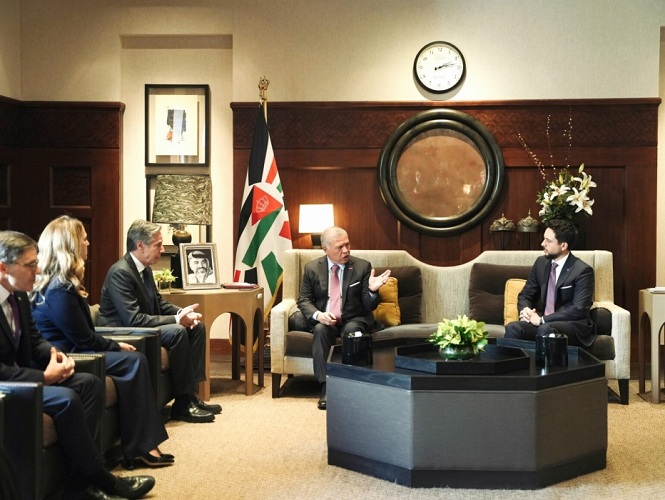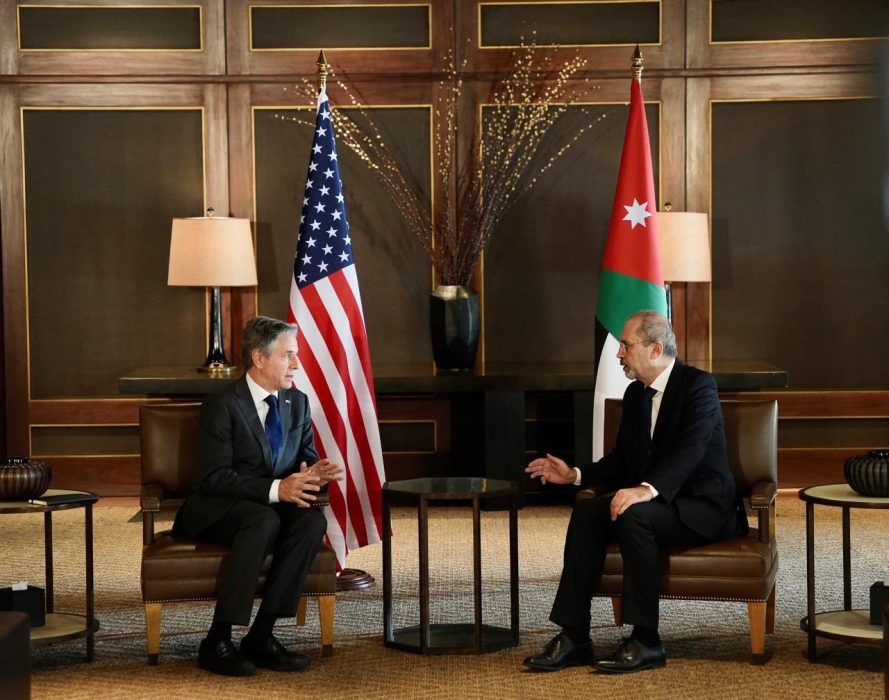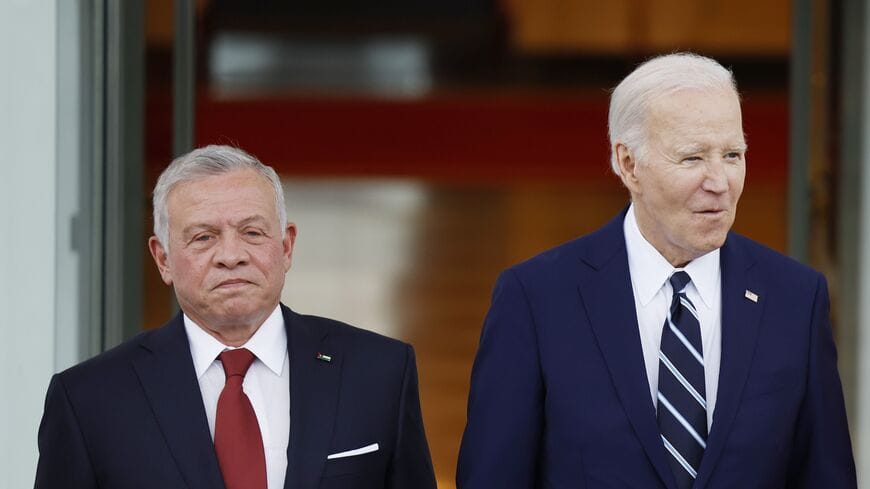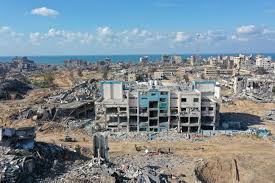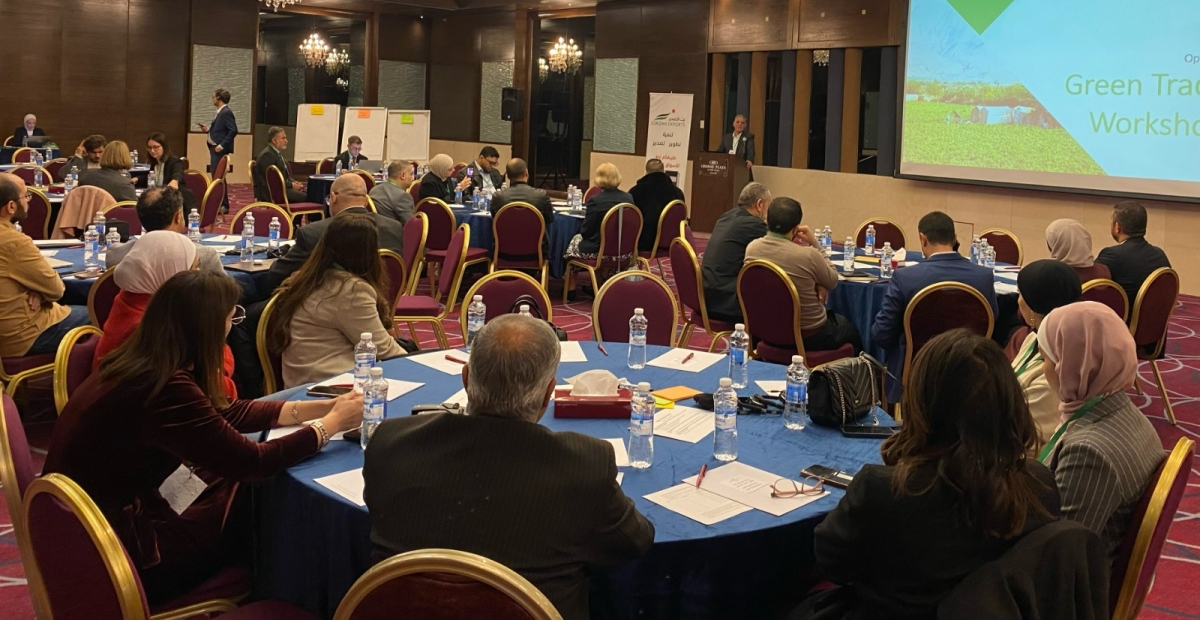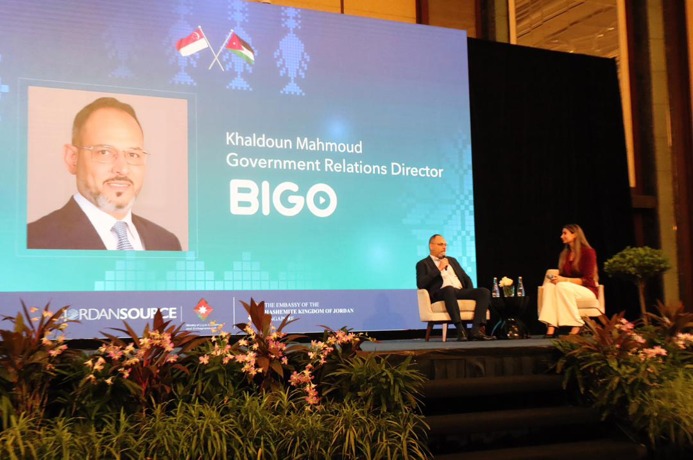Al-Anbat meets with the General Director of the "COVAX" initiative, Dr. Derek Sim

Al-Anbat -
Al - Anbat - Dalal Omar
Translated by - Neveen - Al - Jarrah
The vast majority of global communities have come to believe that the Covid-19 pandemic has ended, at a time when many peoples of countries in the world are still suffering from repeated infections with the Corona virus, which indicates that these countries are no longer fighting the pandemic on the top of their priorities, and their precautionary measures are few. Especially in Asian, African and some European countries.
It is worth noting that the pandemic is still going strong in some regions, and the World Health Organization is the only authorized body that has full knowledge and authority to announce the end of the pandemic globally.
For its part, Al-Anbat newspaper conducted an exclusive interview with Dr. Derek Sim, the Director General of the "Kovax" initiative, which aims to help countries achieve the goals of their national vaccination programs, and is considered the only one that works to purchase the vaccine and ship and deliver Covid-19 vaccines, with the aim of improving Equitable levels of vaccination around the world by delivering the vaccine to low-income countries, as it shipped more than 1.8 billion doses to 146 countries around the world.
How far are we from saying "the pandemic is officially over”?
The pandemic has not ended yet, and we are still dealing with the challenges and repercussions it imposed. Covid-19 has claimed nearly 6.5 million people around the world, including one million over the past year. Despite the general belief that the pandemic has passed, we are seeing cases increasing in many regions, including many countries in Asia and Africa, as well as in some European countries.
There is no doubt that the vaccine helped save many lives and reduced serious infections, but with the passage of time we are learning more about the long-term effects and consequences of the Corona virus, which are worrisome results. So we must keep our primary goal in mind, which is to get vaccines to countries, and support them in providing reinforcements for frontline workers and the most vulnerable population, in order to maintain and enhance immunity and protect against serious illness and death, while we continue to support health care systems In countries to be able to deal with the virus and its mutants.
Although many countries have eased restrictions, we see that some countries have chosen to re-impose them for fear of a new wave that may hit with the return of the cold winter months. Can you explain this.
The level of global protection today is much higher than it was in the past, due to local and international vaccination programmes. It must be noted that although many countries have successfully passed the critical phase of the pandemic, the pandemic is still going on, and new variants pose new challenges, so we must be careful.
We are working to help countries with their booster dose programs, and we hope that we will soon be able to include adaptive vaccines that control variants.
Vaccines and booster shots are the most important tools for preventing severe infection and death. However, controlling the disease involves a combination of restrictions, vaccinations, booster shots, and sometimes quarantine. Local governments are best informed about conditions within their communities, and therefore are best placed to decide what kind of restrictions (in addition to vaccinations) are most appropriate to control the pandemic locally.
With new types of coronavirus likely to emerge this winter, communities must continue to provide vaccines and boosters. What is your role in getting the vaccine to both high- and low-income countries?
Since beginning operations, COVAX, the only global initiative working to procure, ship and deliver COVID-19 vaccines with the goal of improving equitable levels of vaccination around the world by getting the vaccine to low-income countries, has shipped more than 1.8 billion doses to 146 countries. country around the world.
In addition, the initiative has also worked to assist many local health systems by providing them with refrigeration equipment to ensure that the vaccination process is facilitated. The COVAX initiative continues to succeed through close collaboration between the Vaccine Alliance, CEPI, WHO, the United Nations Children's Fund, UNICEF, and through continued work with governments, civil society, industry, academia, and a range of other actors on all fronts. levels.
The COVAX initiative aims to help countries achieve the goals of their national vaccination programs, and we hope that they will exceed them. To achieve this goal, the initiative will continue during the next year to work with countries to respond to their requirements regarding vaccines and its accessories, with support designed according to their ever-changing needs, but flexible and adaptive when necessary.
In your opinion, is the global distribution of the vaccine fair?
The world witnessed a large gap in equality in the distribution of vaccines in the first year of vaccine launch, and inequality also included some countries stockpiling doses, imposing export restrictions, delays in supply chains, and giving drug manufacturers priority to high-income countries.
Today, however, that has all changed, thanks in large part to the launch of COVAX, the only global initiative procuring, shipping and delivering COVID-19 vaccines with the goal of improving equitable levels of vaccination around the world by delivering the vaccine to countries with Low-income: The more than 1.8 billion doses shipped to date represent 39% of doses administered in middle-income countries, and 76% of doses in low-income countries.
Unfortunately, the gap was not completely closed, but we were able to vaccinate 79% of health care workers in the 92 countries included in the COVAX Advance Market Commitment, meaning that the vaccination rate among health care workers in these countries has increased The percentage of vaccination in this field exceeded in high-income countries, where the percentage reaches 70%, and 65% of the elderly have been vaccinated.
In addition, booster vaccination programs have been launched in 82% of low-income countries, including adapted vaccines that control variants.
The immunization program has been completed for 52% of the population of low-income countries. Therefore, we are still close to bridging the gap in the near future.
What is the proposed solution for distributing vaccines for future epidemics?
It is certain that the crisis of distributing Covid-19 vaccines is not and will not be the last global health crisis, it may be just the beginning of a future that we cannot predict. What we do know is that multilateral cooperation and alliance will be of great importance in any future regional or global health cluster, because national or regional responses alone will inevitably create a gap, and the COVAX initiative program can teach us a lot about how to prepare for future epidemics and how to best respond to them.
In addition, it must be noted that the first vaccine dose was administered as part of the initiative's vaccine distribution program on January 16, 2021, that is, only 39 days after the first dose of the Covid-19 vaccine was administered in high-income countries, which is considered a historical precedent. By itself. Now, a year and a half later, more than half of the population of low-income countries is vaccinated. Despite all the challenges the initiative faces, there is no doubt that the world would have been worse off without the global and multilateral response to the pandemic.
What is the likelihood of a new pandemic emerging in the near future?
We can only guess what the future holds for us. We are currently following the Ebola strain spreading in Sudan with great caution, as well as the Marburg virus, the Nipah virus, and other diseases, all of which are worrisome. In addition, we face risks from antimicrobial resistance, zoonotic diseases, and climate-related challenges (we see a 2% increase in the likelihood of COVID-like epidemics each year). We are not sure of the best way to deal with these diseases and viruses, it may be vaccines, and it may be treatments, we do not know yet!
That is why we need a robust pandemic preparedness and response system, backed by strong global health institutions, investment and research and development capacity, as well as the continuous strengthening of primary health care and immunization systems. This requires advance funding that can be rapidly distributed when needed. In addition, it is necessary to facilitate access to vulnerable groups when formulating future response plans for any epidemics.
